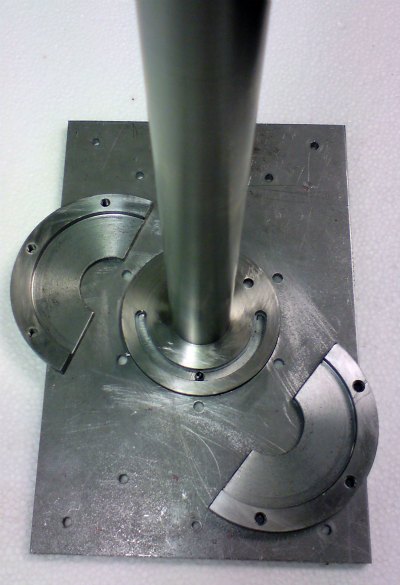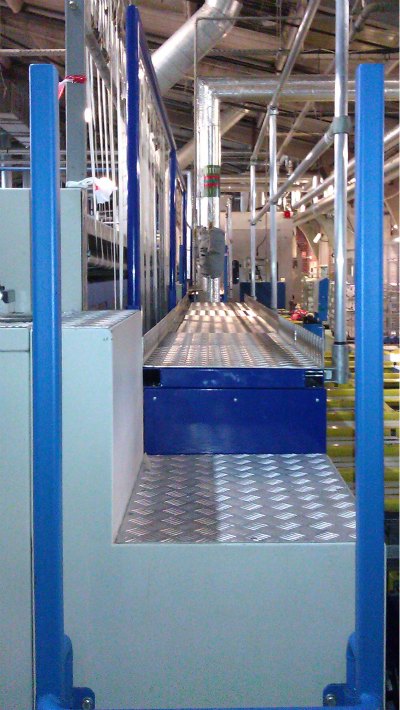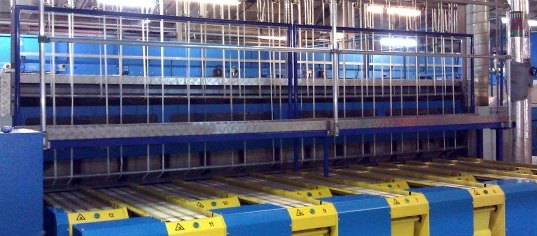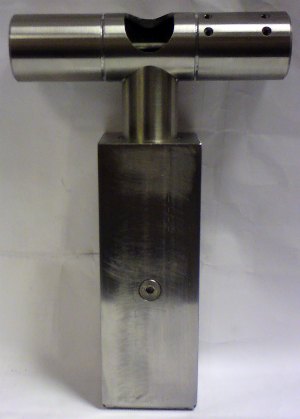Contact Us
Our considerable experience and skill
base, coupled with our dedication to quality has given us a loyal customer
base who can expect to receive products manufactured to an exacting
standard, delivered on-time and with first class communication during
the project life cycle.
Brightera would therefore welcome the opportunity to discuss any requirements
you may have and offer you our most competitive price and service.

CNC and more,
all tailored for you
Brightera Engineering Ltd
Unit 2, Beverley Trading Estate,
Morden, Surrey. SM4 4LU
Telephone : 020 8337 5161
Email: info@brightera.co.uk



Milling / Turning / Welding / Fabrication Engineering / Assembly / Bespoke Design
Brightera Engineering Ltd have many
years of manufacturing and assembly experience.
Our in house facilities include CNC Milling, CNC
Turning, CNC Sliding Head, Welding, Fabrication, Engineering Precision,
Grinding, Sub Contract Machining.
Brightera Engineering Ltd
is dedicated to providing the ultimate precision engineering service
that is complimented by our CNC precision engineering and machining
centres. We are proud that we employ the highly skilled engineers with
the ability to problem solve and think outside of the box.
Therefore we believe we provide a complete engineering service, from
solving problems and developing a design to your specifications whilst
offering advice and prototyping using many years of experience in CNC
precision engineering.
We are proud that we can provide ingenious
designs and ideas and are confident we can find the most efficient engineering
solution to save your company money.

In modern CNC systems, end-to-end component design is highly automated using computer-aided design (CAD) and computer-aided manufacturing (CAM) programs.
The programs produce a computer file that is interpreted to extract
the commands needed to operate a particular machine via a postprocessor,
and then loaded into the CNC machines for production. Since any particular
component might require the use of a number of different tools-drills,
saws, etc., modern machines often combine multiple tools into a single
"cell".

Turning is the process whereby a single point cutting tool is parallel to the surface. It can be done manually, in a traditional form of lathe, which frequently requires continuous supervision by the operator, or by using a computer controlled and automated lathe which does not. This type of machine tool is referred to as having computer numerical control, better known as CNC. and is commonly used with many other types of machine tool besides the lathe.
When turning, a piece of material (wood, metal, plastic, or stone) is rotated and a cutting tool is traversed along 2 axes of motion to produce precise diameters and depths. Turning can be either on the outside of the cylinder or on the inside (also known as boring) to produce tubular components to various geometries. Although now quite rare, early lathes could even be used to produce complex geometric figures, even the platonic solids; although until the advent of CNC it had become unusual to use one for this purpose for the last three quarters of the twentieth century. It is said that the lathe is the only machine tool that can reproduce itself.
The turning processes are typically
carried out on a lathe, considered to be the oldest machine tools, and
can be of four different types such as straight turning, taper turning,
profiling or external grooving. Those types of turning processes can
produce various shapes of materials such as straight, conical, curved,
or grooved workpiece. In general, turning uses simple single-point cutting
tools. Each group of workpiece materials has an optimum set of tools
angles which have been developed through the years.
Welding
is a fabrication or sculptural process that joins materials, usually
metals or thermoplastics, by causing coalescence. This is often done
by melting the workpieces and adding a filler material to form a pool
of molten material (the weld pool) that cools to become a strong joint,
with pressure sometimes used in conjunction with heat, or by itself,
to produce the weld. This is in contrast with soldering and brazing,
which involve melting a lower-melting-point material between the workpieces
to form a bond between them, without melting the workpieces.
Many different energy sources can be used for welding, including a gas flame, an electric arc, a laser, an electron beam, friction, and ultrasound. While often an industrial process, welding may be performed in many different environments, including open air, under water and in outer space. Welding is a potentially hazardous undertaking and precautions are required to avoid burns, electric shock, vision damage, inhalation of poisonous gases and fumes, and exposure to intense ultraviolet radiation

Fabrication
as an industrial term refers to building metal structures by cutting,
bending, and assembling. The cutting part of fabrication is via sawing,
shearing, or chiseling (all with manual and powered variants); torching
with handheld torches (such as oxy-fuel torches or plasma torches);
and via CNC cutters (using a laser, torch, or water jet).
The bending is via hammering (manual or powered) or via press brakes
and similar tools. The assembling (joining of the pieces) is via welding,
binding with adhesives, riveting, threaded fasteners, or even yet more
bending in the form of a crimped seam.
Structural steel and sheet metal are the usual starting materials for
fabrication, along with the welding wire, flux, and fasteners that will
join the cut pieces. As with other manufacturing processes, both human
labour and automation are commonly used.
The product resulting from (the process of) fabrication may be called
a fabrication. The end products of other common types of metalworking,
such as machining, metal stamping, forging, and casting, may be similar
in shape and function, but those processes are not classified as fabrication.
Engineering
is the discipline, art, skill and profession
of acquiring and applying scientific, mathematical, economic, social,
and practical knowledge to design and build structures, machines, devices,
systems, and materials.
Engineers use their knowledge of science, mathematics, logic, economics, and appropriate experience or tacit knowledge to find suitable solutions to a problem. Creating an appropriate mathematical model of a problem allows them to analyze it (sometimes definitively), and to test potential solutions.
Engineers typically attempt to predict how well their designs will perform to their specifications prior to full-scale production. They use, among other things: prototypes, scale models, simulations, destructive tests, nondestructive tests, and stress tests. Testing ensures that products will perform as expected.
Engineers as professionals take seriously their responsibility to produce designs that will perform as expected and will not cause unintended harm to the public at large. Engineers typically include a factor of safety in their designs to reduce the risk of unexpected failure. However, the greater the safety factor, the less efficient the design may be.



